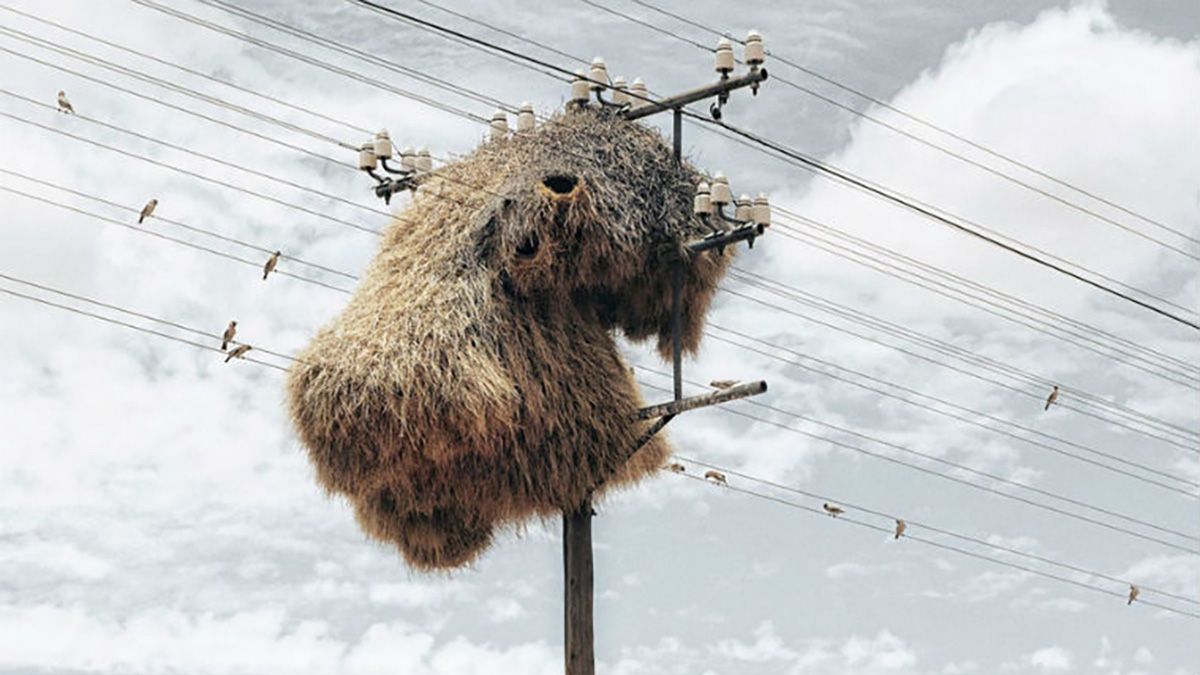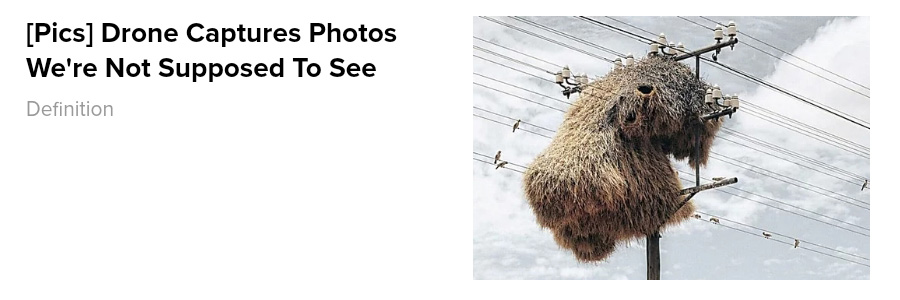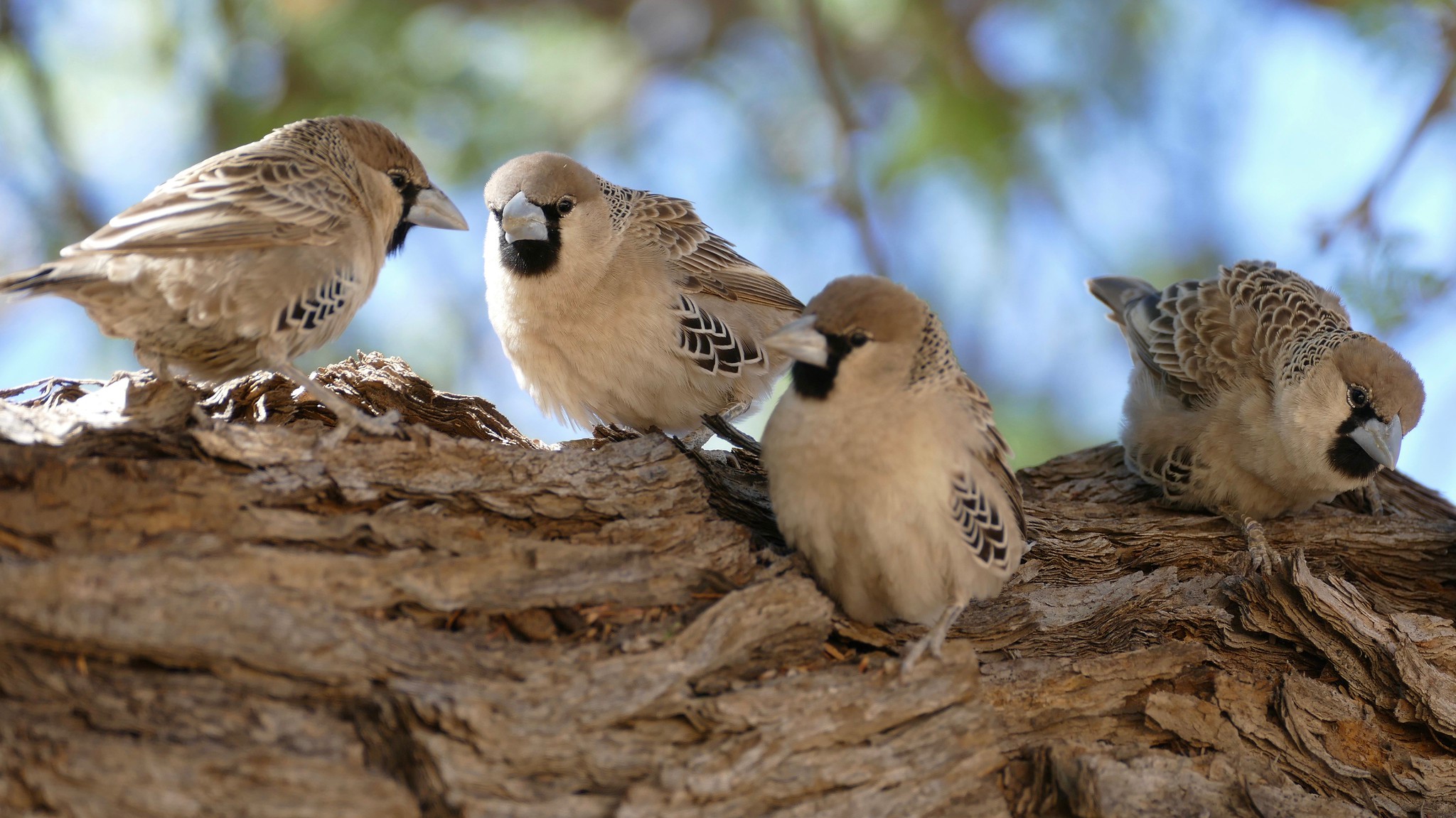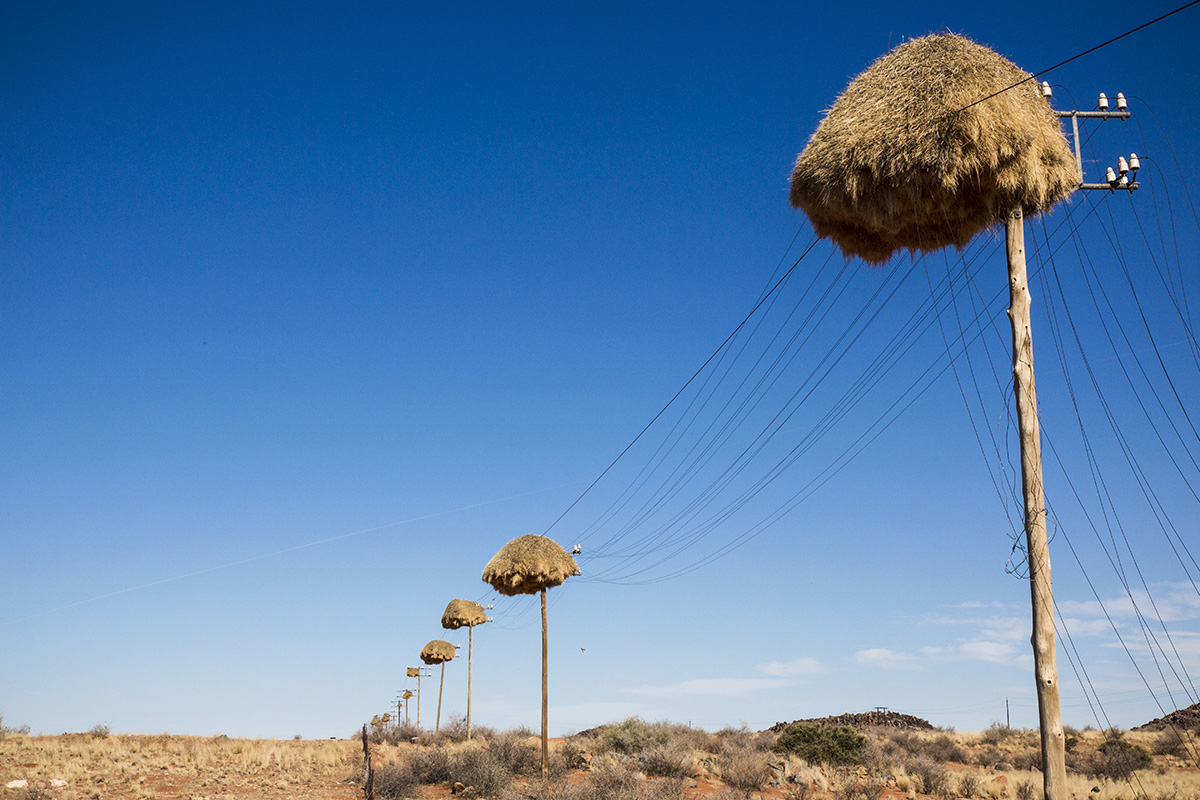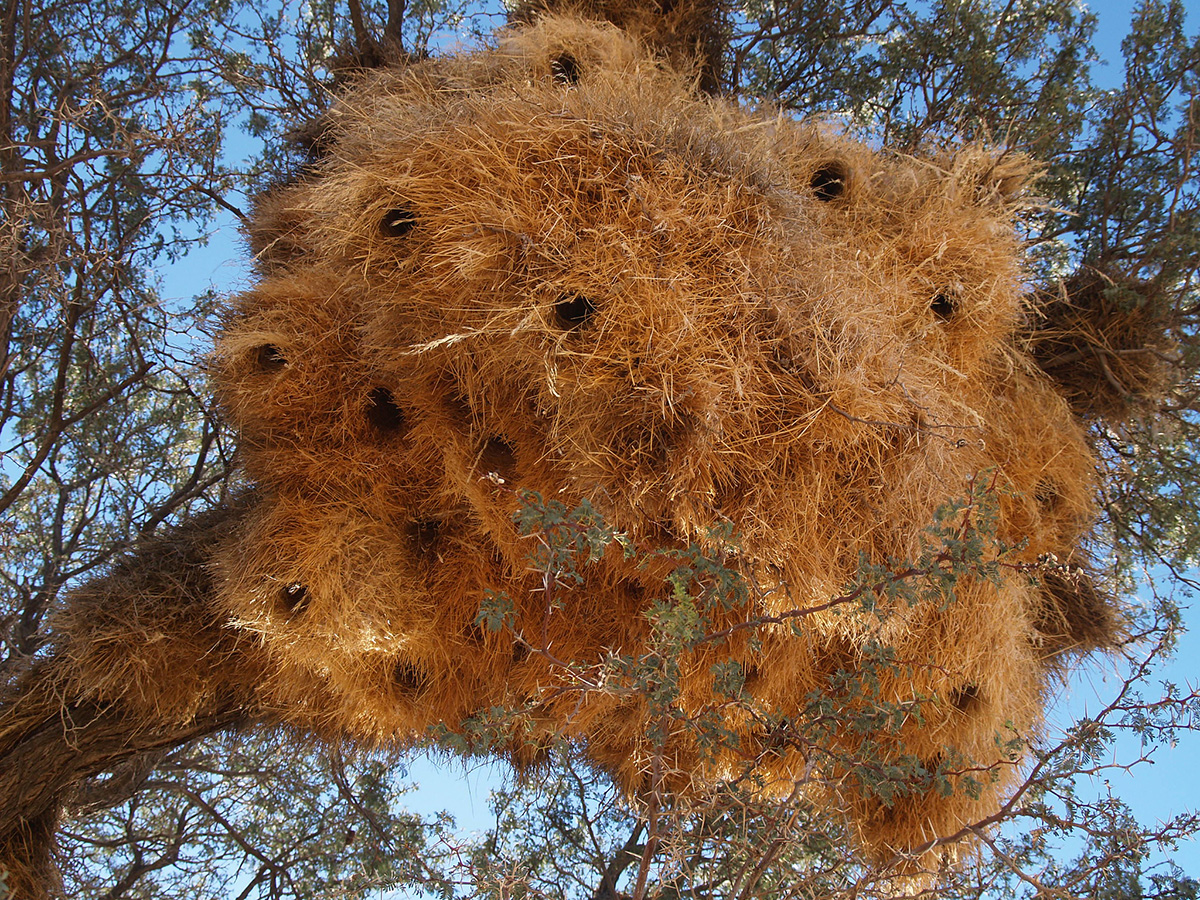A picture of a sociable weaver birds' nest on a telephone pole in southern Africa was misused in an online ad. The ad led to a 39-page slideshow article that never even mentioned the picture. The photographer, Dillon Marsh, was not properly credited by the advertiser. He also didn't appear to use a drone to shoot the picture.
Since at least July 2021, online advertisements have displayed the words: "[Pics] Drone Captures Photos We're Not Supposed to See." It showed a purported drone photograph of a massive nest or other object hanging off a telephone pole or power lines. The ads appeared to promise answers. For example, this ad appeared next to an article on the 10news.com website.
A variation of the ad said: "Drone Snaps Photos No One Should Ever See." A third version read: "Photos That Can Give You A New Perspective." They were sponsored by the Definition.org website, which has quite the track record for misleading clickbait. The ad was hosted by the Outbrain advertising network.
Clicking on the ads led to a 39-page slideshow article and a headline that read: "Drone Photos Taken In Mid Air Will Have You Feeling Uneasy."
The article contained several photographs that appeared to be shot from the air, whether by a drone, helicopter, or airplane. One claimed it showed the aftermath of a residential explosion. Another described a shot that was purportedly captured over Barcelona, Spain. We also found a picture that was said to show volcanic activity in Iceland.
We clicked through all 39 pages. The article never mentioned the photograph from the ad. It was clickbait. We clicked "next page" nearly 40 times so you don’t have to.
The picture in the ad was not captured high in the sky using a drone. It appeared to be shot on the ground by artist and photographer Dillon Marsh of Dillon Marsh Photography. We found no credit to Marsh on the Definition.org website.
The picture showed a large birds' nest for the sociable weaver, built on a telephone pole. The bird species lives in the Kalahari region of southern Africa.
The only place they can be found in the United States is with the San Diego Zoo. The zoo described the nests built by sociable weavers as providing enough living space for an "entire colony as well as for future residents." The nests can hold up to 400 birds and can potentially last an entire century.
Nests built by the species are made from large twigs, dry grasses, straw, soft plants, cotton, fur, and fluff. The zoo also published that a "proper nesting tree has a long, smooth trunk and high branches to discourage slithering predators." This is perhaps what makes a telephone pole the perfect trunk for sociable weavers.
The nests keep the sociable weavers cool in the summer and warm on cold nights. They welcome other birds inside, such as the South African pygmy falcon, pied barbet, familiar chat, red-headed finch, ashy tit, and rosy-faced lovebird. Vultures, eagles, and owls can also sometimes be seen on top of the nests. The added company is said to make for a more secure home from predators.
As for food, the zoo's page about the sociable weaver said that they "need less water than any other bird" and that "most never take a drink." They get their moisture from bugs. For more on the species, visit the San Diego Zoo website.
Several other photographs of the nests can be viewed on the Getty Images website.
In sum, ads promised to reveal something about a strange drone photograph that "we're not supposed to see." The long articles that resulted from the ads never mentioned the picture. In reality, it was shot from ground level and showed a massive nest built on a telephone pole by sociable weavers.
Note: Photographs from Flickr are credited to Bernard Dupont and Rui Ornelas. Matt Mawson shot the Getty Images picture. The photograph in the ad, which went uncredited by the advertiser, appeared to originally be captured by Dillon Marsh.
